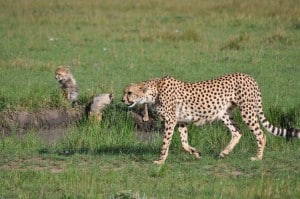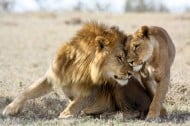Masai Mara game reserve
The Masai Mara reserve is Kenya’s finest life sanctuary. Everything regarding this reserve is outstanding. The life is plentiful and there are lots of animals to see and photograph. Birds too are prolific, together with migrant birds and over fifty-seven species of birds of prey.
The climate is mild, seldom too hot and well unfold downfall year spherical. Once it rains, it is nearly invariably within the late afternoon or night. Between July and Oct, once the nice gnu migration is within the Mara the feeling is incomparable. The life is way from being confined among the Reserve boundaries and a good larger space, usually cited because the ‘dispersal area’ extends north and east of the sport Reserve.

Maasai people live among the dispersion space with their stock however centuries of shut association with the life have resulted in associate virtually dependent relationship wherever life and folks board peace with each other.
The first sight of this park is exciting. Here the nice herds of shuffling elephants browse among the wealthy tree-studded grasslands with associate occasional observance of a solitary and crabby rhinoceros, Thompson’s and Grant’s antelope, topi, antelope and lots of additional species of plains’ game supply a chic selection of food for the dominant predators; lion, leopard and big cat that hunt during this pristine geographic area.
In the Mara river, hippos submerge at the approach of a vehicle solely to surface seconds later to snort and grumble their annoyance. However this richness of fauna, this profuseness of winged beauty and therefore the untouched fragility of the landscape, are all subordinate to the Mara’s foremost attraction, the march of the wildebeest.
After exhausting the grazing in Tanzania’s northern Serengeti Park, an out-sized range of wildebeest and equid enter Masai Mara round the finish of Gregorian calendar month drawn by the manna grass raised by the long rains of April. It’s calculable that quite 0.5 1,000,000 wildebeest enter the Mara and are joined by another a hundred thousands from the Loita hills east of the Mara. Driving within the thick of those nice herds is associate unthinkable expertise.
Whilst the eyes feast on the spectacle, the air carries the smells, the mud and therefore the sounds of many thousands of animals. Once the Mara grass has been eaten and the recent rain in Tanzania has brought forth a brand new flush there, the herds flip south, heading many kilometers back to Serengeti and therefore the Ngorongoro plains.
Their young ones are born in time to grow sufficiently sturdy to undertake the long march north six months later.
Apart from the higher famous species, there also are different rare ones that may be value-added to the visitor’s listing. These embody the roan bovid, the Bat-eared foxes and thousands of topi. The mixture of a mild climate, scenic splendor and much numbers of lives makes the Masai Mara National Reserve Kenya’s preferred tourist destination.

